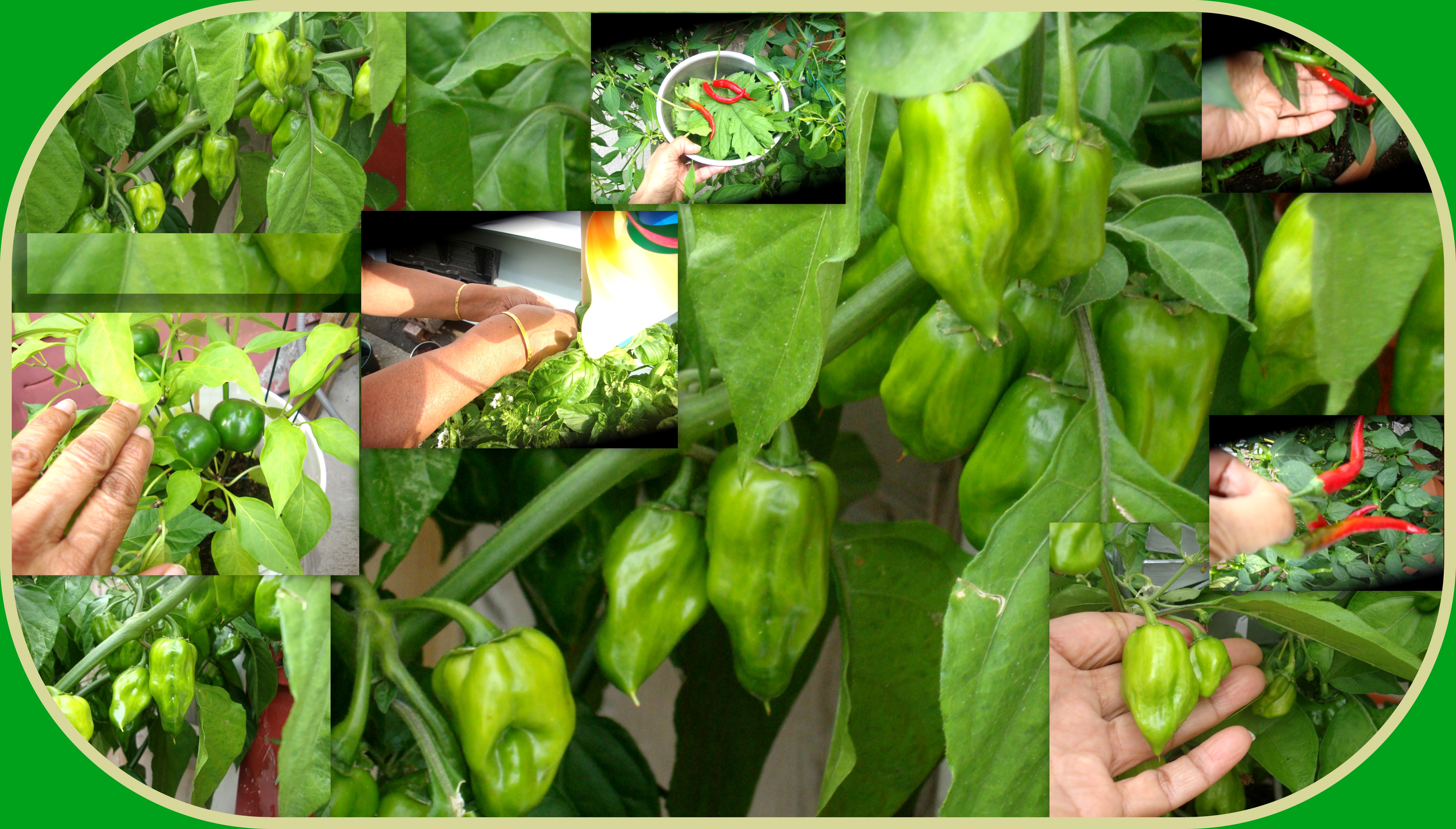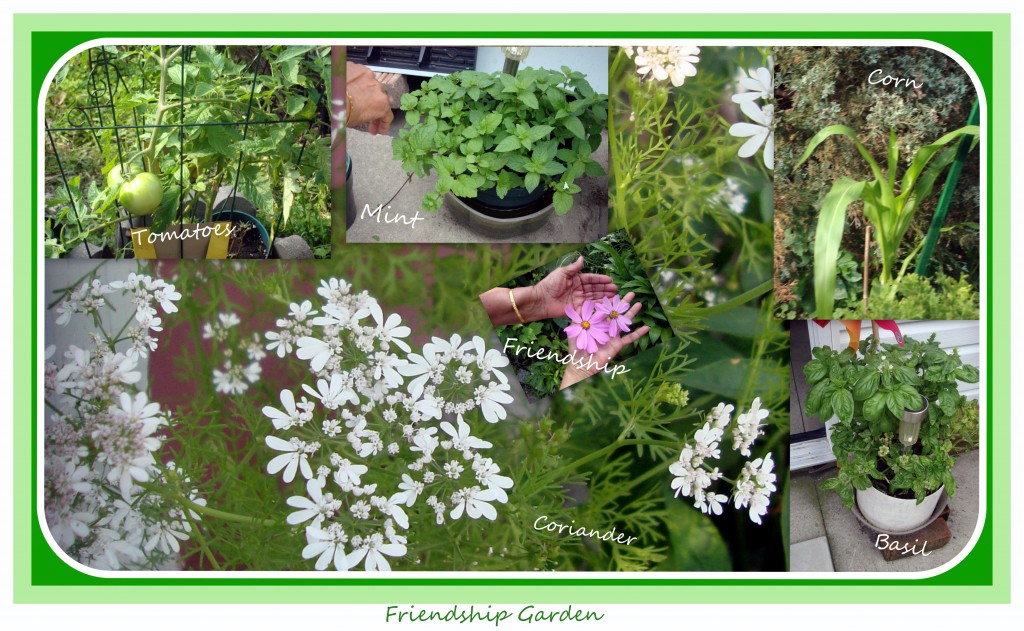Gardens are as different as the people who tend them. We are very fortunate in Toronto to have the great multicultural mix that we have that gives even our gardens an “ethnic” flair. My definition of an ethnic garden is a garden that sustains our souls and spirits and in which the seeds we plant give food and bring memories of the homeland we left behind.
It was a delightful experience for me to visit such a garden recently at my friend’s home. Hers is mainly a container garden. We had tea and Indian snacks in the garden. “The bird a nest the spider a web the human friendship.” (William Blake) As you can see in the above collage, as I was leaving, I cupped some flowers in my hand and invited her to put her hand there too and I named it “Friendship Garden.”
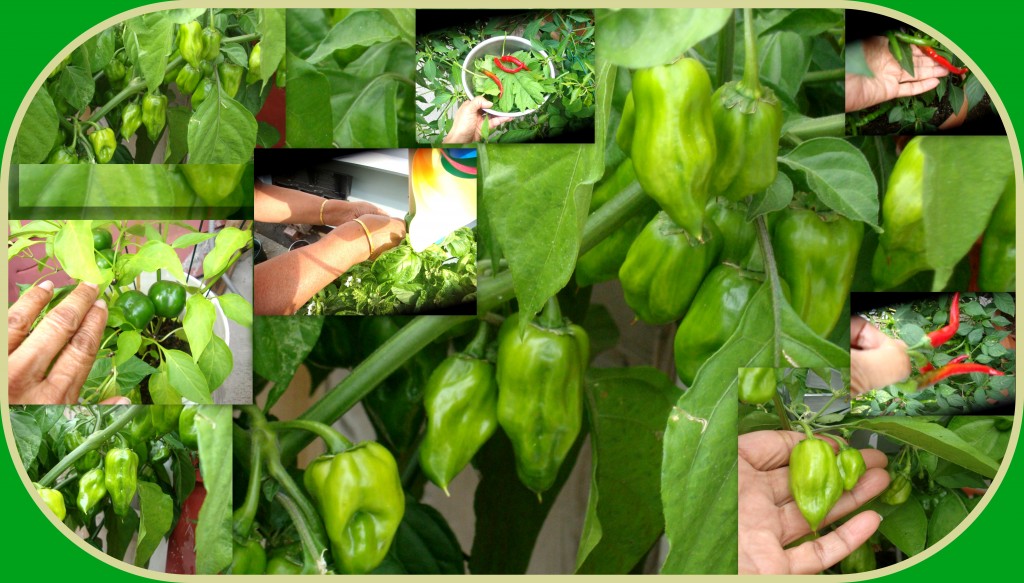
An important aspect of “ethnic” gardening is sharing the produce and sharing recipes on how to use the harvest of fruits and vegetables. My friend picked basil, peppers, and karela for me. We also talked about how she uses these in her Indian cooking. That is one type of bonding that took place there between the two of us. There’s another type of bonding that comes about while gardening – one is with the earth and the water used to nourish the plants, and the other is with our inner selves and the community we share our produce with. ” Food is not just fuel. Food is about family, food is about community, food is about identity. We nourish all those things when we eat well.” (Michael Pollan)
As you can see from the pepper collage, several varieties of pepper abound in this garden. It was fun for me to both touch and admire their freshness and color. My friend, like other avid gardeners, spends hours out in the garden. It is a form of exercise and relaxation for her. It brings many memories of her home country for her too. In addition, she will also have chilis for the whole year which she will preserve. The harvest from an ethnic garden can, depending on the produce, bring happiness and cost-saving for the future as well. She loves her chilis and uses them year-round.

Many ethnic people use karela or bitter melon. It’s very bitter but when cooked can be delicious. Many Indian dishes are made with karela. It’s very tasty stuffed with ground meat or shrimp. For health reasons, many ethnic people use this vegetable as well. My friend told me that it’s very good for diabetes and gave me some leaves which she told me to boil and drink every day.
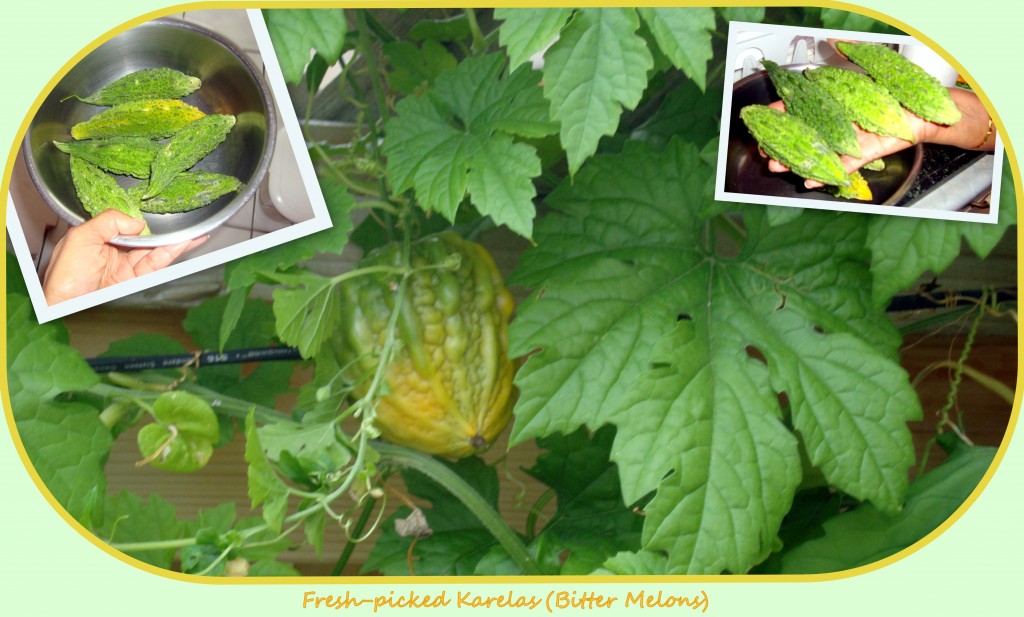
These substances either work individually or together to help reduce blood sugar levels.
It is also known that bitter melon contains a lectin that reduces blood glucose concentrations by acting on peripheral tissues and suppressing appetite – similar to the effects of insulin in the brain.
This lectin is thought to be a major factor behind the hypoglycemic effect that develops after eating bitter melon. (diabetes.co.uk)
This small ethnic garden yields an abundance of produce and brings joy to its owner, family, and friends. Ethnic gardens are bountiful and beautiful this time of year and my friend’s garden, like other ethnic gardens, is organic. “Odd as I am sure it will appear to some, I can think of no better form of personal involvement in the cure of the environment than that of gardening. A person who is growing a garden, if he is growing it organically, is improving a piece of the world. He is producing something to eat, which makes him somewhat independent of the grocery business, but he is also enlarging, for himself, the meaning of food and the pleasure of eating.” (Wendell Berry) As you all know, the new or not so new buzzword, as far as gardens go, is “organic.”
Last, but not least, the last collage shows that the fun didn’t end in my friend’s garden. Before I boiled the karela leaves, it was fun to play with the colors and make these arrangements. Hope you enjoy!
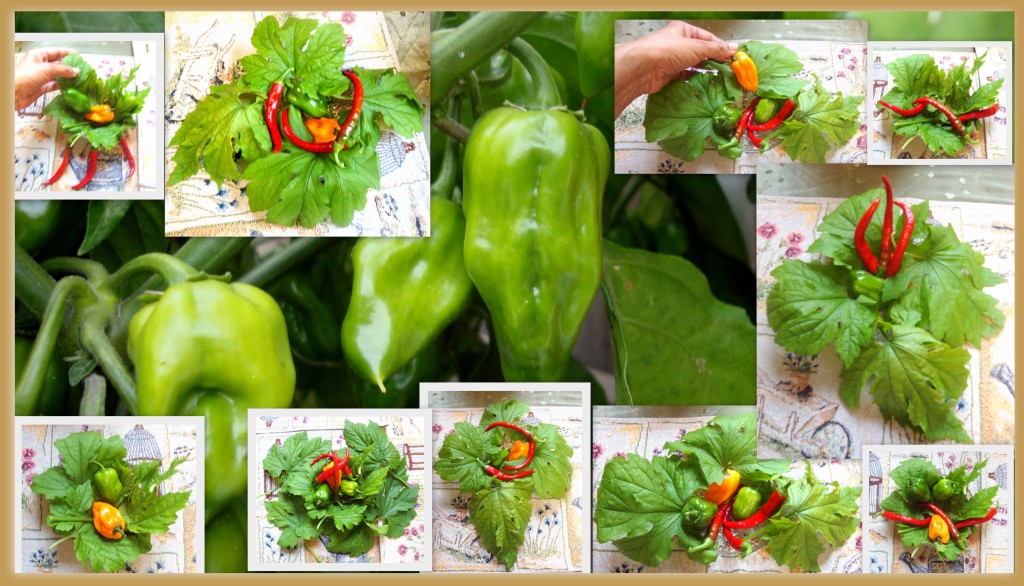
“The greatest service which can be rendered any country is to add a useful plant to its culture.” (Thomas Jefferson)

